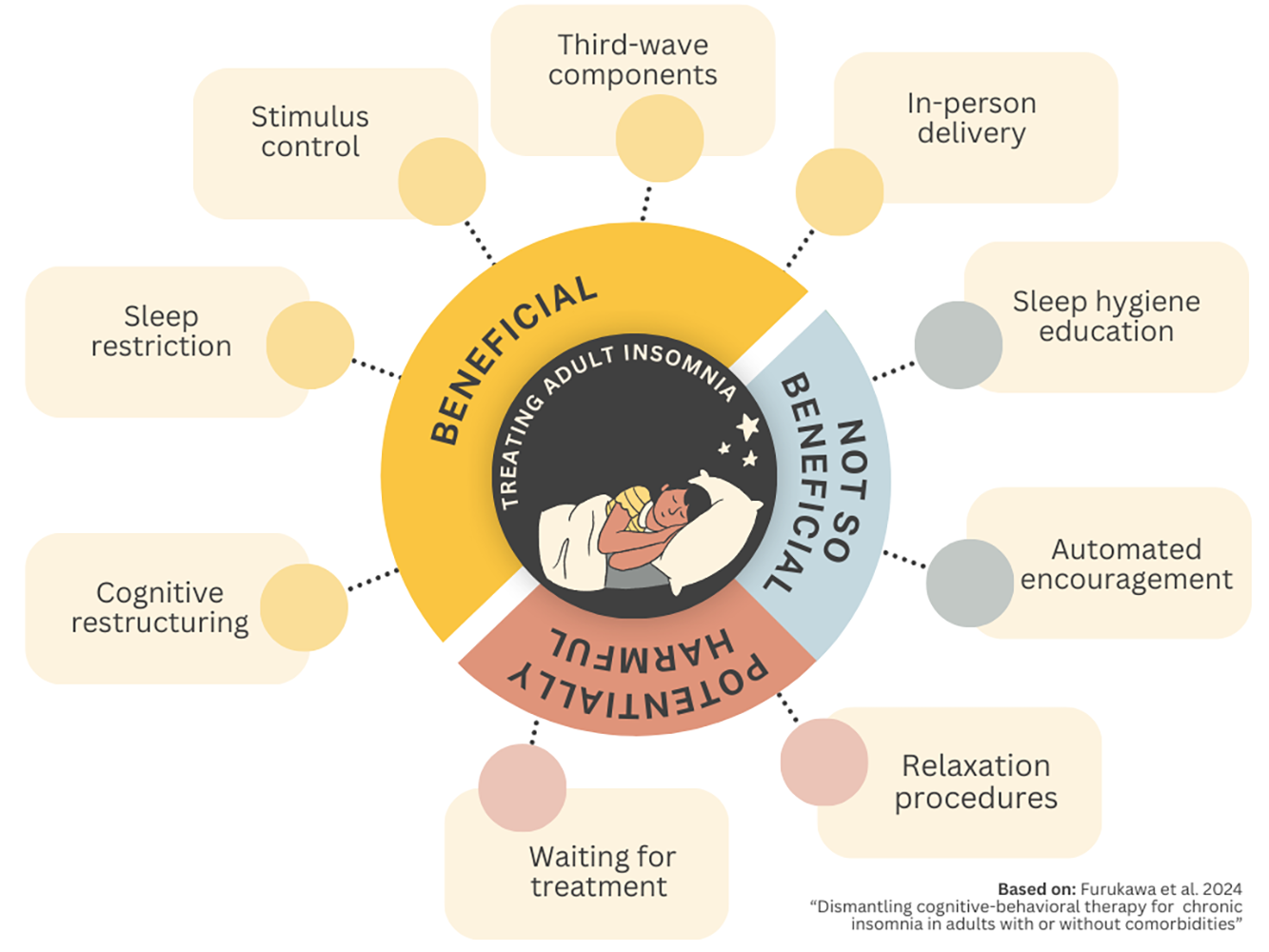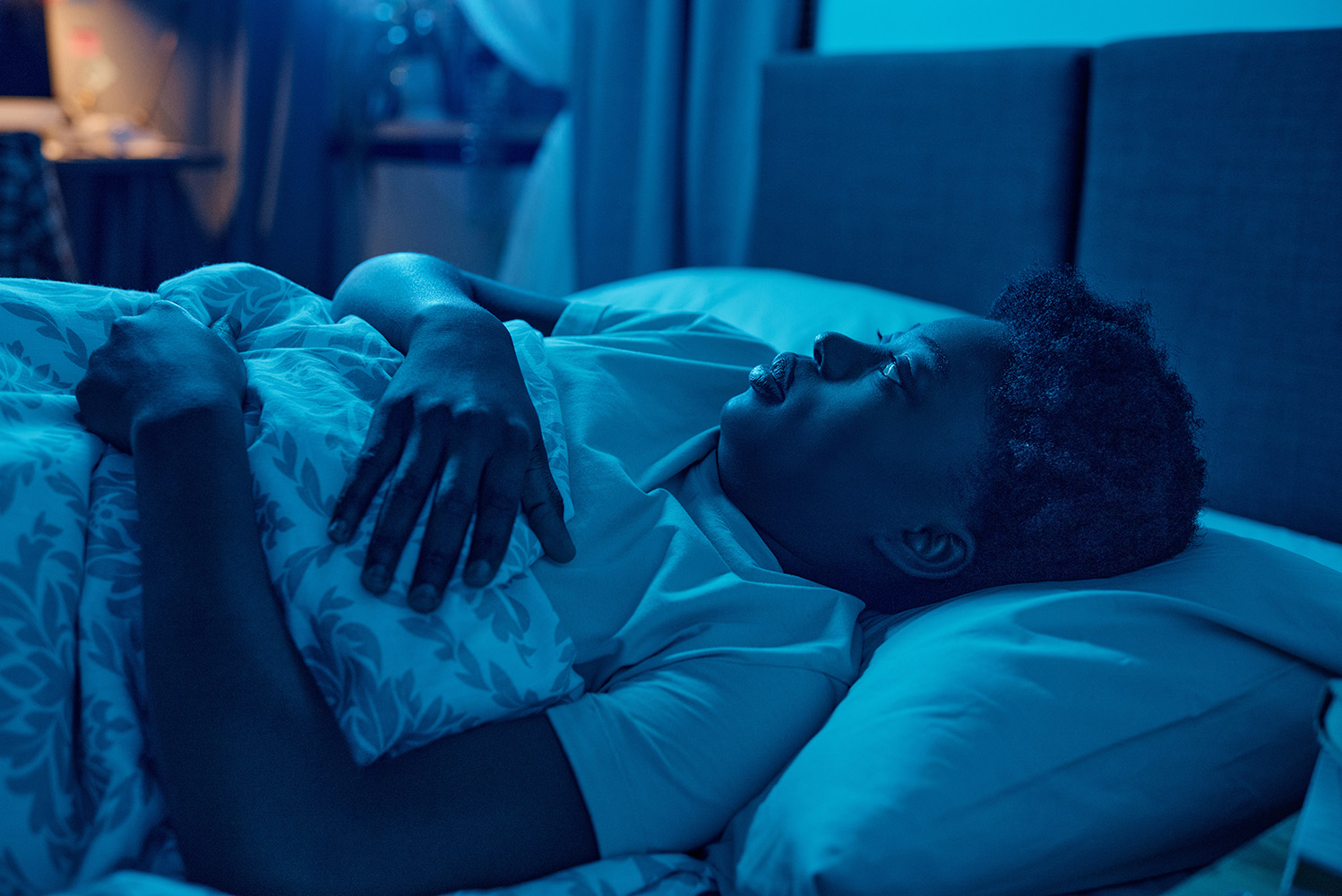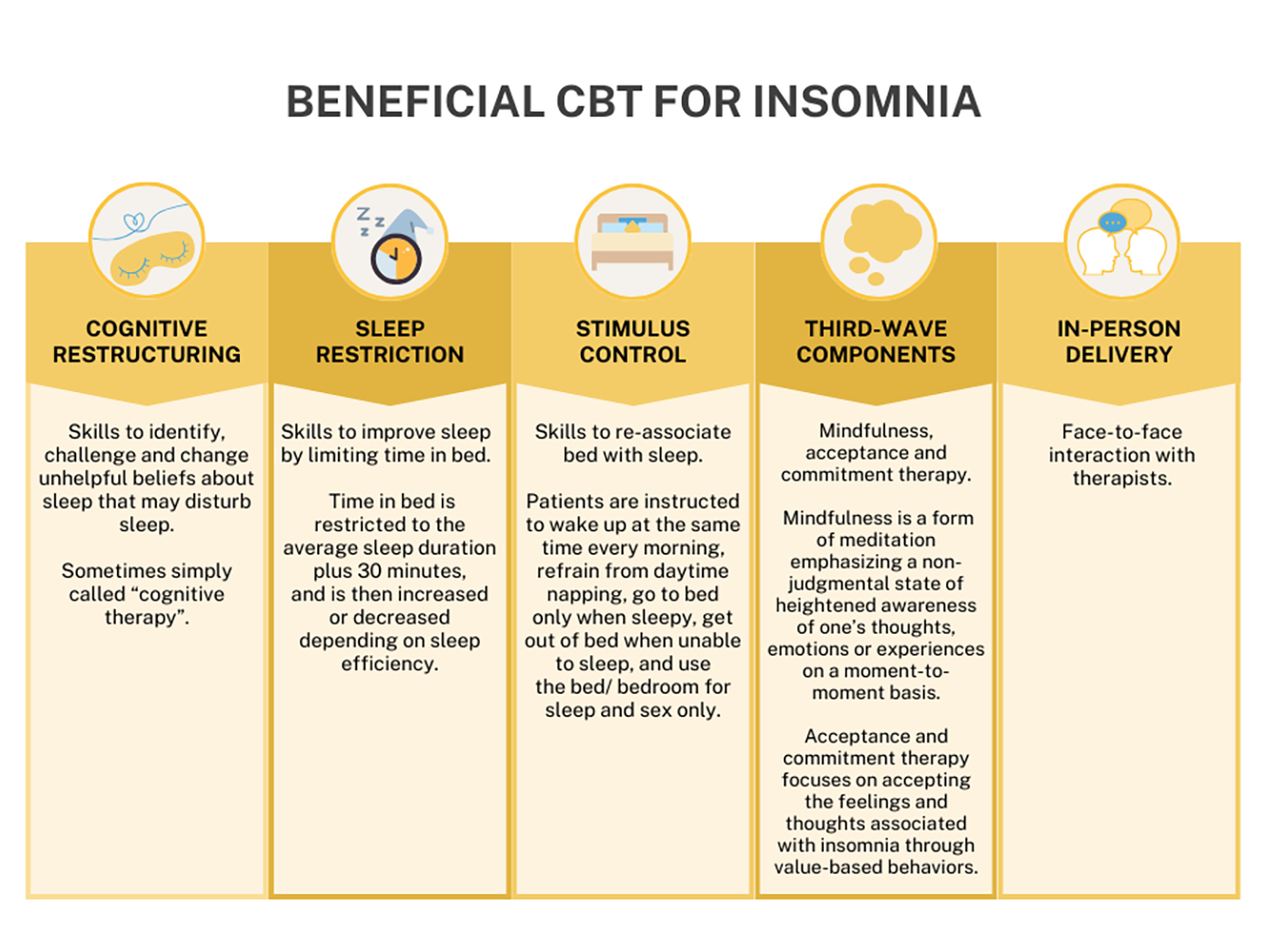Streamlining cognitive behavioral therapy for chronic insomnia Analysis of hundreds of studies identifies the most beneficial thinking and behavior strategies for improving sleep Research news


A good night’s sleep. Getting good quality sleep for long enough each night tends to help you feel better. © Rawpixel/Envato Elements
A combination of cognitive and behavioral strategies, ideally delivered in person by a therapist, maximizes the benefits of cognitive behavioral therapy for insomnia (CBT-I), according to new research. CBT-I is a form of talk therapy, which can be delivered in person or through self-help guides. By analyzing 241 studies, involving over 30,000 adults, researchers identified the most beneficial components of CBT-I. These included: cognitive restructuring, third-wave components, sleep restriction, stimulus control and in-person delivery. Self-help with human encouragement could also be beneficial, while waiting for active treatment and enforcing relaxation procedures appeared to be potentially harmful. Understanding which components of CBT-I can offer the most benefit will hopefully help practitioners help their patients get a better night’s sleep.
It’s time for bed but your mind is racing. Maybe you get up several times a night or wake up early in the morning feeling hardly rested at all. It’s estimated that up to a third of adults experience insomnia at some point, and anywhere from 4% to 22% chronically. Chronic insomnia can impact daily life, making it difficult to function when awake or causing distress. More serious cases may require support and treatment, and one medication-free option is cognitive behavioral therapy for insomnia.

Infographic summary of more and less beneficial CBT-I components. © 2023 Nicola Burghall
CBT-I is a form of therapy that uses educational, cognitive or behavioral strategies to help patients improve their quality of sleep. It may be delivered in person or online, through an app or a guidebook, with the support of a therapist or independently. Previous studies have shown that CBT-I can be a beneficial and low-risk option for patients with chronic insomnia. However, as it encompasses a broad range of strategies which can be delivered in different ways, it has been difficult to determine which are most successful and if all are necessary for a patient to experience an improvement.
A team led by researchers at the University of Tokyo Hospital analyzed 241 studies of chronic insomnia from 1980-2023, to try and connect the different threads of CBT-I with their outcomes. The studies included 31,452 adult participants, mainly from North America and Europe, with an average age of 45.4 years. “We expected to find some behavioral components (such as sleep restriction and stimulus control) beneficial, but it was surprising to find that some cognitive components (such as cognitive restructuring and third-wave components) were also effective,” explained Yuki Furukawa, lead author and a medical doctor at the university hospital.

Lying awake. Sixty-eight percent of the study participants identified as women, typically middle-aged, with psychological or physical co-morbidities (having two or more medical conditions) and moderate insomnia symptoms. ©AnnaStills/ Envato Elements
Using a statistical method called component network meta-analysis, the team ranked the effects of different interventions. According to their results, although following a self-help guide with encouragement from other people was helpful, in-person interaction with a therapist was more beneficial. Other critical components included: cognitive restructuring (skills to identify, challenge and change unhelpful beliefs about sleep), sleep restriction (limiting time in bed), stimulus control (re-associating bed with sleep) and third-wave components (mindfulness, acceptance and commitment therapy).
On the other hand, sleep hygiene education (explaining the biology of sleep and providing recommendations about lifestyle and environment) did not appear to be essential. Trying to follow relaxation procedures (such as structured physical or cognitive exercises) could be counterproductive, while knowingly having to wait for treatment to begin appeared to have a harmful effect.

Explanation of beneficial strategies. ©2023, Nicola Burghall
“Overall, our findings identified several essential components of CBT-I which can lead to an intervention that maximizes treatment efficacy, minimizes treatment burden and increases scalability, that is, makes it easier to offer this treatment to more patients. Further large-scale trials are needed to confirm these contributions,” said Furukawa. “We hope that our research encourages practitioners who are interested in CBT-I to learn streamlined CBT-I, so that in turn more people who experience insomnia can be offered this relatively simple, noninvasive yet potentially powerful psychotherapy.”
Papers
Yuki Furukawa, Masatsugu Sakata, Ryuichiro Yamamoto, Shun Nakajima, Shino Kikuchi, Mari Inoue, Masami Ito, Hiroku Noma, Hikari Nishimura Takashina, Satoshi Funada, Edoardo G. Ostinelli, Toshi A. Furukawa, Orestis Efthimiou, Michael Perlis, "Components and delivery formats of cognitive-behavioral therapy for chronic insomnia in adults with or without comorbidities: a systematic review and component network meta-analysis," JAMA Psychiatry: January 17, 2024, doi:10.1001/jamapsychiatry.2023.5060.
Link (Publication )
)





